
Mobile app development is constantly changing with the emergence of new technologies and trends.
While the pandemic certainly hurt many businesses, just as many, if not more, thrived during this period by adapting to their customers’ needs.
Food delivery apps like UberEats and DoorDash implemented safety incentives, for example, that enhanced the user experience and made their customers feel safe, such as offering contact-free delivery options and more.
Remember, the word “trend” simply means a general direction in which something is developing or changing.
It can be new or disruptive technologies or unexpected events occurring in the world, like COVID-19.
If you’re developing a new mobile app, or if you’re thinking about the future of your business’s current mobile app, it’s crucial to stay ahead of new and emerging trends happening in the mobile app world.
In this article, we’ll highlight the top mobile app trends.

Table of Contents
- Artificial Intelligence and Machine Learning
- Advances in Algorithms
- Advances in Cloud Computing
- Machine Learning APIs
- Applications of ML in Mobile Apps
- Mobile Commerce
- Advances in mCommerce
- Advantages of mCommerce for Businesses
- Augmented Reality and Virtual Reality
- Advances in AR & VR
- Application of AR and VR in Mobile Apps
- Voice Technology
- Advances in Voice Technology
- Applications of Voice Technology in Mobile Apps
- Additional Benefits of Voice Technology
Artificial Intelligence (AI) and Machine Learning (ML) are becoming increasingly prevalent in the mobile app industry.
AI is a discipline within computer science that seeks to create machines that mimic human intelligence, and its application in mobile apps can greatly enhance user experiences by offering personalized content, smart recommendations, and voice-activated functionalities, among others.
On the other hand, Machine Learning, a subset of AI, enables apps to learn from user data and predict behaviors, improving the app’s efficiency and functionality over time.
In the context of mobile apps, ML algorithms can help provide a more customized and adaptive user experience, as seen in features like predictive text and personalized content recommendations.
These kinds of advancements are driving trends in the mobile app industry, making apps more intuitive, user-friendly, and engaging.
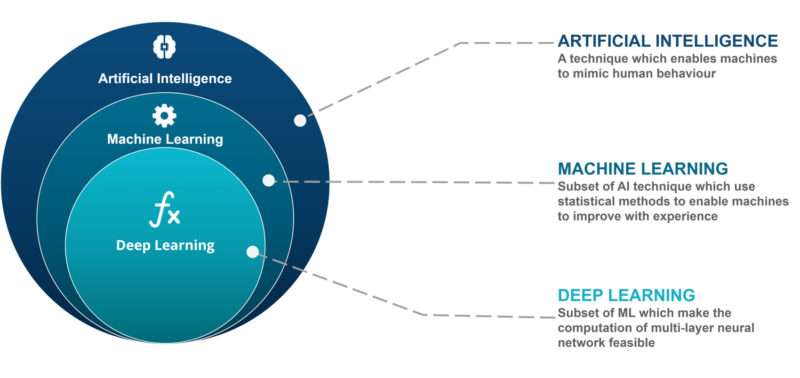
Photo Credit: edureka.co
ML works by identifying patterns in data and leveraging those patterns to perform tasks or predict future data.
PRO TIP:
Remember, data, such as text, voice, or even images, is crucial in ML as it’s used to answer questions. Algorithms can then learn from this data and improve on their predictions and performance.
1.1 Advances in Algorithms
These advances in ML algorithm models have significantly increased the effectiveness of speech and image recognition.
After all, when using these types of algorithms, accuracy is crucial.
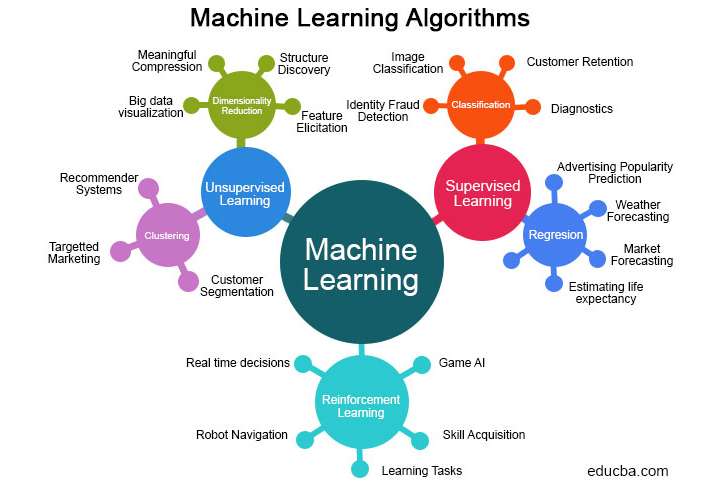
1.2 Advances in Cloud Computing
The collaboration between cloud computing and ML helps businesses that need to manipulate and analyze real-time data to make future predictions.
Advances in cloud computing have had an enormous impact on machine learning capabilities and have greatly decreased the time it takes to train the algorithms.
What used to take weeks or months to train models now can take hours, resulting in the need for fewer resources and lower costs.
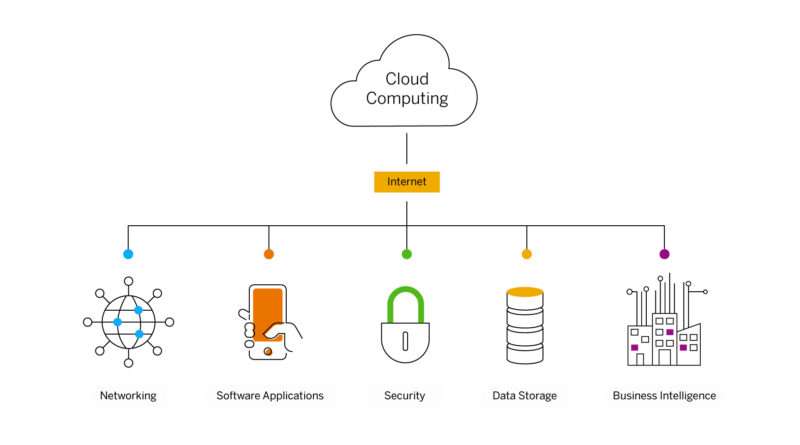
Photo Credit: insights.sap.com
1.3 Machine Learning APIs
As ML and AI-based mobile applications have evolved, so too have the APIs available.
These third-party ML services can offer their own advanced functionality so you don’t need to do it from scratch when developing mobile apps.
AmazonML API, for example, is a machine learning service that mobile app developers use to leverage and integrate with new or existing solutions.
This service generates billions of predictions daily. It lets developers easily create ML models and add intelligence to their mobile applications with ease through their selection of services.
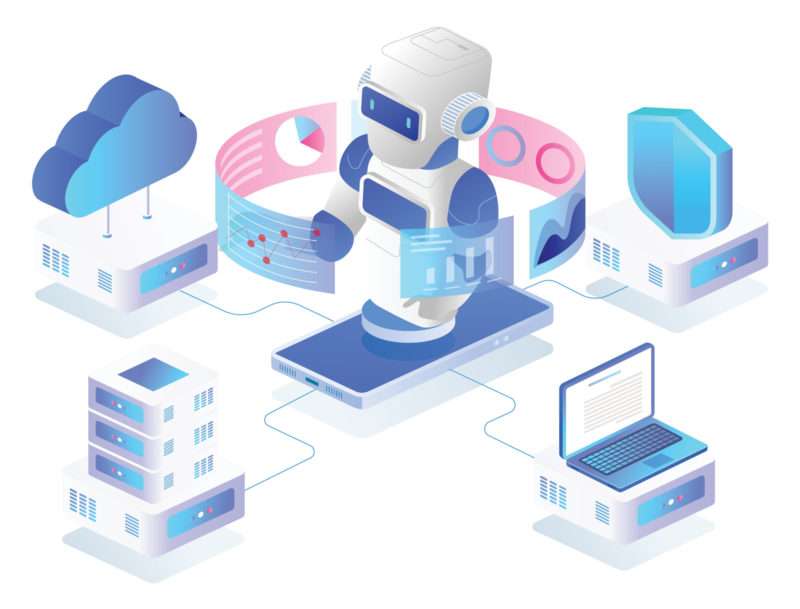
1.4 Applications of ML in Mobile Apps
There’s a wealth of industry-specific applications for ML.
ML is used in finance, which you can see through the use of AI-powered financial assistants, like Bank of America’s Erica.
Existing apps will offer this kind of functionality as added value for their customers. Apps can analyze user data and transaction history to come up with accurate predictions and financial advice.
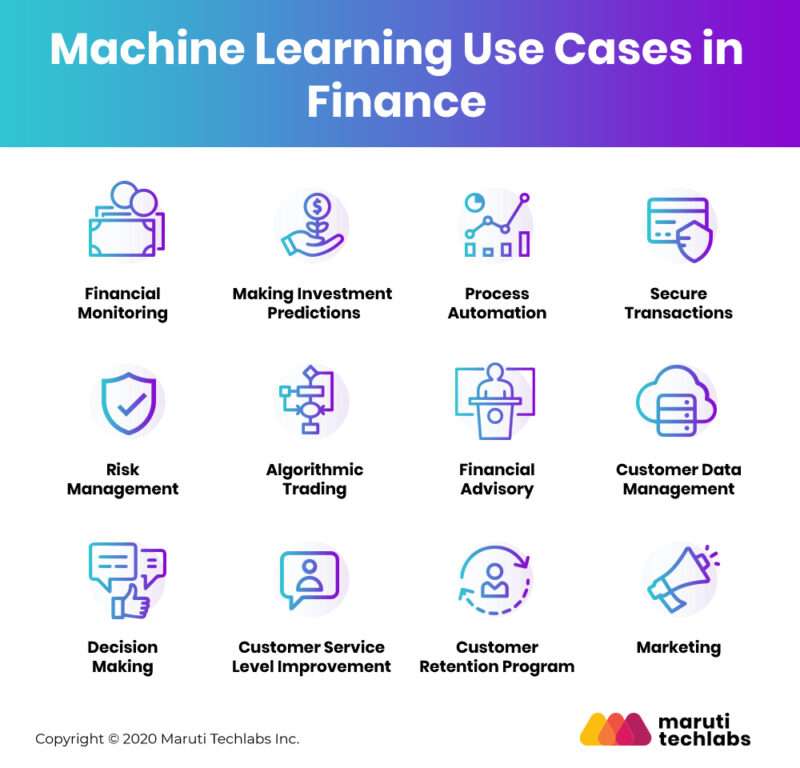
Workout apps also leverage machine learning capabilities to offer personalized lifestyle advice, customized fitness plans and workouts, and more.
Transportation apps like Uber and Lyft use machine learning to keep drivers up-to-date about traffic conditions so routes can be optimized.
These types of apps utilize ML algorithms and prediction software that analyses historical data about traffic conditions to detect patterns and make predictions.
Mobile commerce, also known as mCommerce or m-commerce, are mobile apps that are designed for users to perform a variety of commercial activities, such as online banking and online shopping.
While eCommerce has long enabled customers to shop online, mCommerce focuses on allowing them these same capabilities, but right from their mobile device.
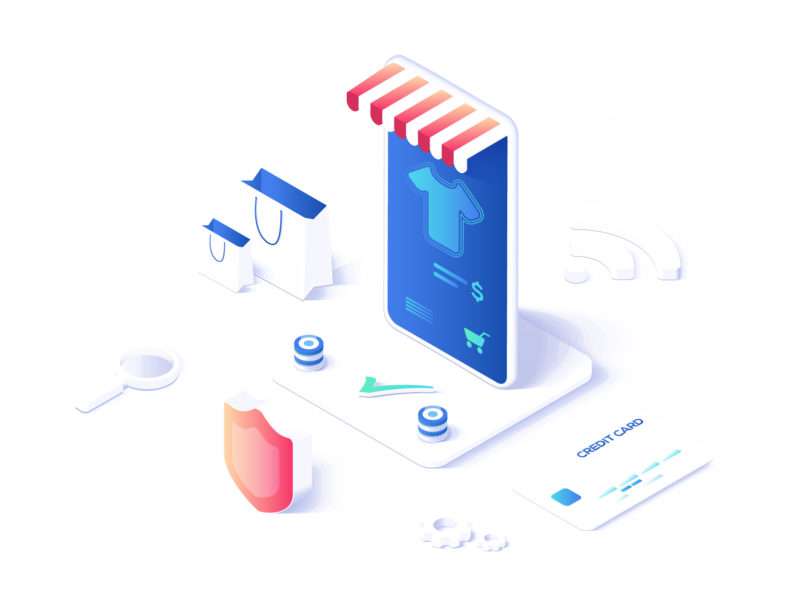
While mCommerce has been around for a while, it’s gained momentum in recent years, particularly during the pandemic which has shifted user behavior significantly.
PRO TIP:
More people are getting comfortable using their mobile phones to shop online and make purchases, and apps are making it easier than ever with voice shopping, one-click ordering, and omnichannel shopping.
2.1 Advances in mCommerce
mCommerce has seen significant advancements in the past years.
For example, mobile payment apps like Apple Pay, Google Pay, and Samsung Pay have simplified transactions, making it easier for customers to make purchases right from their smartphones.
In-app purchases and one-click ordering have also become commonplace, giving an easy, frictionless shopping experience.
Personalized advertising, powered by AI and ML, offers tailored product recommendations based on user preferences and shopping history.
Augmented Reality (AR) has been introduced into the shopping experience too, allowing customers to virtually try products before buying.
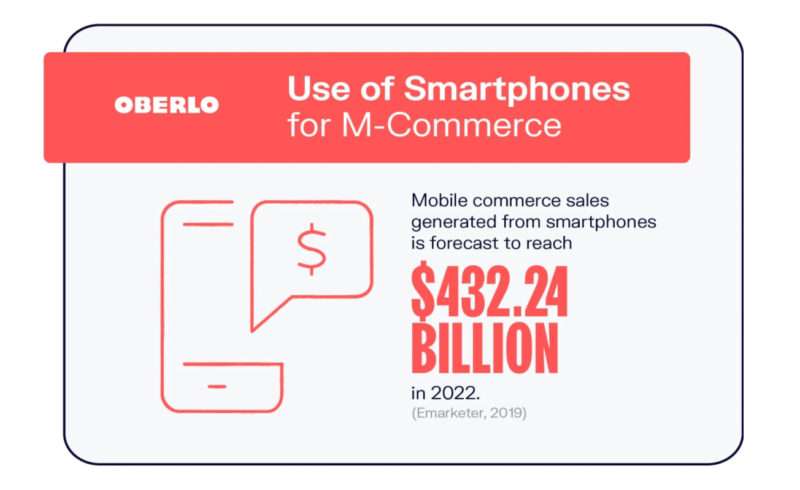
The adoption of chatbots for customer service provides real-time, personalized assistance, boosting customer satisfaction.
Lastly, the integration of social media platforms with m-commerce enables social commerce, where users can shop directly from their social media feeds. These innovations are continually improving the convenience and efficiency of m-commerce.
2.2 Advantages of mCommerce for Businesses
As you can guess, there’s simply an abundance of benefits to using mCommerce. This is one mobile app development trend that’s here to stay, and will only improve in the coming years.
Improvements in mCommerce will help accelerate the buyer journey. At the end of the day, you want customers to buy something, and this happens when the buying process is fast and easy.
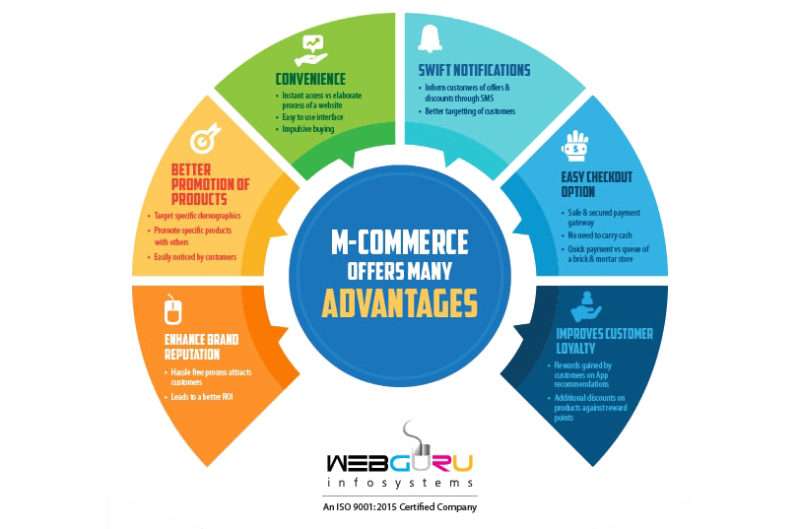
Mobile apps are fast and allow smartphone users to browse and purchase products quickly and efficiently on their mobile devices.
mCommerce also allows for a wider audience reach, allowing businesses to enter new markets.
After all, the number of people who own a smartphone continues to rise, making them all potential customers.
PRO TIP:
More people are getting comfortable using their mobile phones to shop online and make purchases, and apps are making it easier than ever with voice shopping, one-click ordering, and omnichannel shopping.
This larger user base opens the doors for more opportunities for businesses. It also opens the doors to new marketing opportunities.
mCommerce analyzes mobile app data and app traffic to improve marketing efforts and optimize a shop.
More and more apps are including technology like AR and VR to enhance the user journey and offer unique experiences by offering capabilities like motion tracking, environmental awareness and understanding, people occlusion, light estimation and so much more.
As a user, you’ll find AR and VR elements in nearly every mobile app development industry, which we’ll take a look at later.
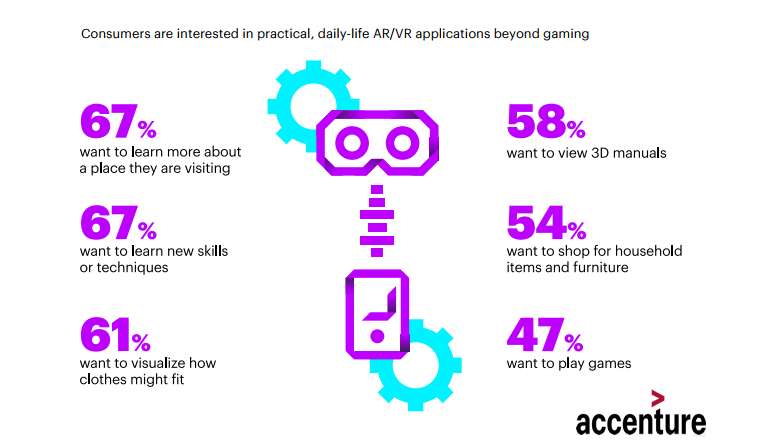
3.1 Advances in AR & VR
These days, there’s a lot that’s possible with the inclusion of AR and VR technology.
In recent developments, Google and Facebook created VR goggles that can attach to mobile phones for experiencing virtual worlds, which is often used in gaming.
When it comes to AR, on the other hand, more businesses are allocating their budget into AR mobile app development because of the possibilities it brings.
In AR technology, users can place virtual objects in the real world, they can move, scale, and rotate these virtual objects, interact with them, and measure real objects through virtual anchors.
As you can imagine, this offers opportunities across the spectrum of industries.
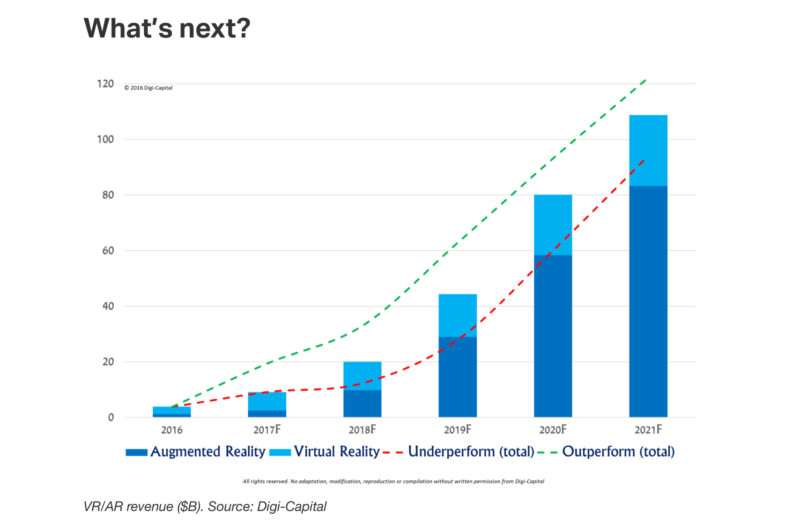
3.2 Application of AR and VR in Mobile Apps
There are many apps on the Apple App Store offering AR and VR as their primary feature, like Pokémon GO, for example, but its application use goes far beyond gaming and entertainment.
Businesses in every industry are leveraging this technology in their mobile applications to bring additional value to their customers.
AR and VR has allowed for improved communication and international partnerships by creating a shared virtual space for conferences, meetings, and live events.
As discussed earlier, it’s used to improve the customer experience, particularly with mCommerce, where AR technology allows people to try on clothes virtually or view virtual products in their space.
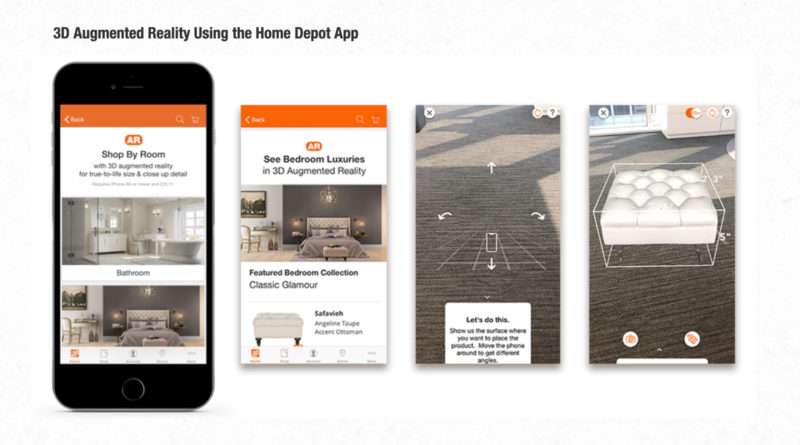
AR can also help in the real estate space by allowing customers to experience potential homes. This technology allows them to view interactive blueprints and virtual visualizations.
The emergence of voice technology has been a gamechanger and is one of the latest mobile app development trends.
Voice search offers a hands-free way for users to conduct online searches.
Voice user interface (VUI) is how developers design voice-based applications like Siri and Alexa. As you can imagine, the design of these applications is far different from designing a typical app with a graphical user interface.
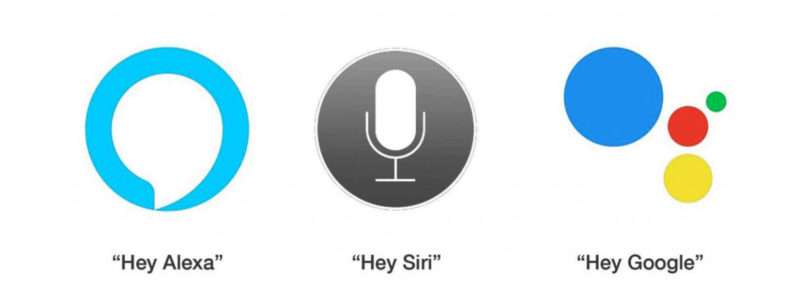
Photo Credit: cyfuture.com
VUI leverages predictive ML coupled with voice recognition to enable users to interact with apps through just their voice.
This opens new possibilities for personalization.
In the United States, roughly 66 million people own smart speakers. Voice technology is a trend that’s here to stay.
4.1 Advances in Voice Technology
The advances in voice technology have a lot to do with the rapid development of other technologies like data modeling and artificial intelligence.
These kinds of advancements are helping digital voice assistants become more sophisticated and helpful in their capabilities.
Voice enhances the mobile experience and is becoming one of the most powerful touchpoints between businesses and users.
As voice assistants improve, they can offer more personalized experiences for users.
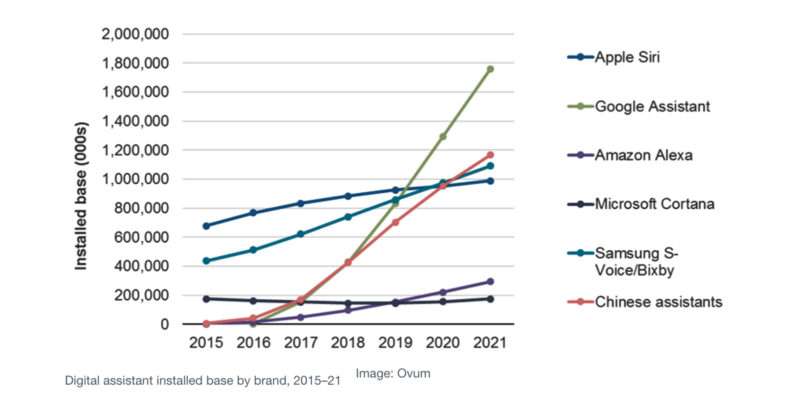
Voice and visual displays will work hand-in-hand as a more seamless experience.
Users can become re-engaged through user-centric voice push notifications.
4.2 Applications of Voice Technology in Mobile Apps
While there are apps that leverage voice technology such as voice recognition, there also exist voice-based apps. These apps, like Alexa and Google Voice, give users a hands-free experience with the online world.
Voice recognition can be easier than typing on a keypad and it can be a faster, more seamless experience that is always improving.
The most common use of voice technology in mobile apps today is voice search. More users are preferring to conduct voice searches for their queries rather than traditional typing.
Voice to text is also popular and leverages speech recognition for hands-free computing.
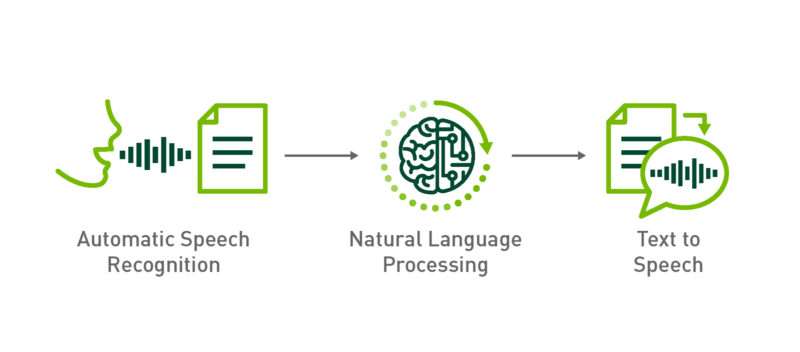
Photo Credit: developer.nvidia.com
4.3 Additional Benefits of Voice Technology
Some of the benefits of voice technology are obvious, like hands-free communication and ease of search, which we discussed in the previous section.
But voice technology has more benefits than that.
It can streamline business operations and processes. Voice assistants can be helpful by scheduling dates, setting reminders, and in general, keeping information relevant to both employees and customers.
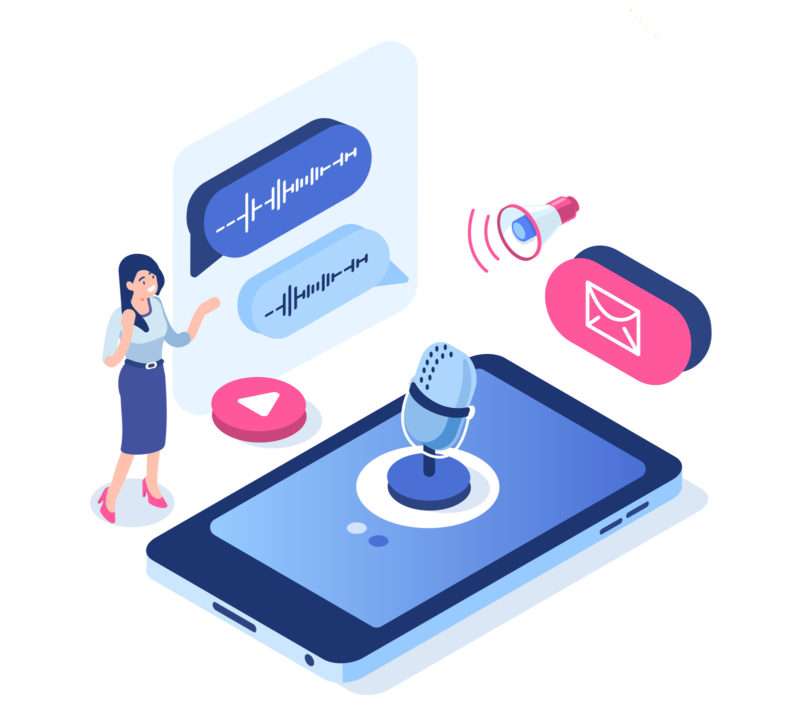
It can also be beneficial from a marketing perspective.
Chatbots, for example, can improve marketing efforts with their ability to personalize and gather enhanced consumer information and insights.
Technology is growing around us at a rapid pace. Can your business keep up?
Apps need to stay on top of mobile app industry trends like machine learning, AI, voice technology and more so they can constantly improve the user experience.
Remember, the app development process is a never-ending one. The work doesn’t finish when your app launches in app stores.
Find out what trending technology you can leverage in your next mobile app project with our Simple Starter package that includes a technical writeup of your app ideas, wireframes, and market research.
What emerging technologies are you excited about?




